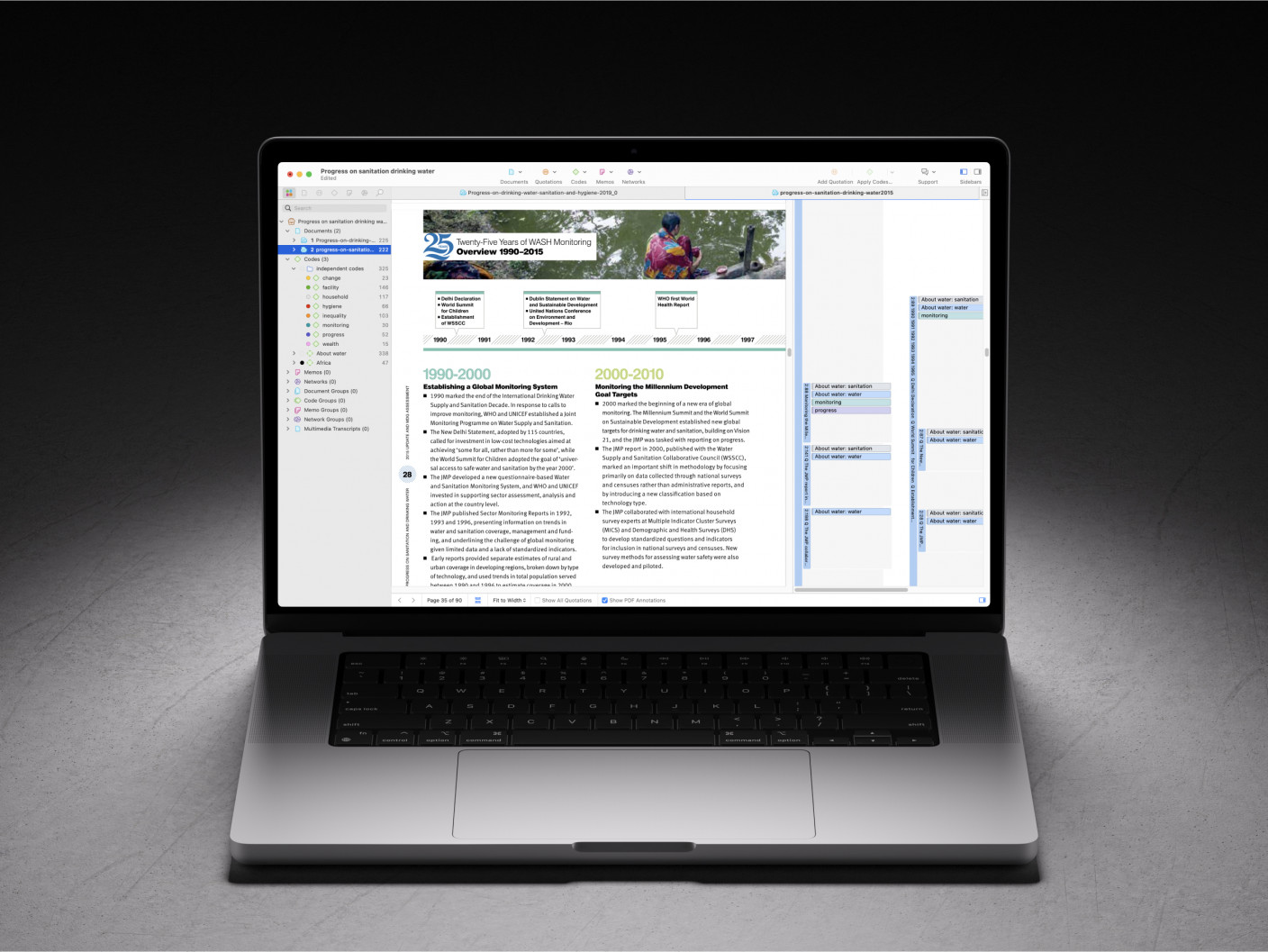- What is Mixed Methods Research?
- Advantages of Mixed Methods Research
- Challenges in Mixed Methods Research
- Common Mistakes in Mixed Methods Research
- Mixed Methods Research Paradigms
- Validity & Reliability in Mixed Methods Research
- Ethical Considerations in Mixed Methods Research
- Mixed Methods vs. Multiple Methods Research
- Mixed Methods Research Designs
- How to Choose the Right Mixed Methods Design
- Convergent Parallel Design
- Explanatory Sequential Design
- Exploratory Sequential Design
- Embedded Mixed Methods Research Design
- Transformative Mixed Methods Design
- Multiphase Mixed Methods Research Design
- How to Conduct Mixed Methods Research
- Sampling Strategies in Mixed Methods Research
- Data Collection in Mixed Methods Research
- Triangulation in Mixed Methods Research
- Data Analysis in Mixed Methods Research
- How to Integrate Quantitative & Qualitative Data?
- How to Interpret Mixed Methods Research Findings?
- Software Tools for Mixed Methods Data Analysis
- How to Write a Mixed Methods Research Proposal
- How to Write a Mixed Methods Research Paper?
- Reporting Results in Mixed Methods Research
- Mixed Methods Research Examples
- How to cite "The Guide to Mixed Methods Research"
What is Mixed Methods Research?
Mixed methods research combines the paradigms of quantitative and qualitative research and uses their strengths to provide better results.
In this guide, we will walk you through everything you need to know to start your own mixed methods research, including definitions, research designs, how to write a mixed methods paper, examples, and the tools available to get the best results from your data.

Introduction
Mixed-method research combines qualitative and quantitative research methods to enhance an investigation's results. Before we discuss the ins and outs of mixed-method research, it is important to define quantitative and qualitative research.
Qualitative research focuses on understanding human behaviour and human experiences. It involves collecting non-numerical data such as words, images, and observations to understand concepts, opinions and experiences. Its data collection methods include interviews, focus groups, and participant observation, among others.
Quantitative research involves a systematic investigation of numbers and statistical analyses to understand phenomena, test hypotheses, and identify relationships between variables. It employs structured data collection methods such as surveys and experiments to gather numerical and measurable data.
Defining mixed methods research has been a topic of discussion over many decades. This is because each approach has its own set of elements, including philosophy, methods, and designs. But despite these different angles, mixed methods research integrates or combines quantitative and qualitative data to maximize the strengths of each and answer questions that cannot be answered by only one approach.
Background
Different research methods have been combined since the 1960s, with Campbell and Fiske, primarily quantitative researchers, recommending mixed methods to increase the credibility of research findings and validate variances (Campbell and Fiske, 1959). Mixed-methods research then became more popular in the late 1970s with the work of Jick (1979). Further down the road, in 2012, Denzin labelled this method as triangulation, but it wasn’t until the 1980s that combining both methods became widely accepted as recognition grew that having a single method could bring bias to a study. However, matching the two research paradigms continues to carry challenges for researchers.
According to Creswell and Plano Clark (2018), mixed methods research is a methodology in which the investigator gathers quantitative and qualitative data, integrates the two, and draws inferences (meta-inferences) from the integration. This provides insight beyond what can be learned from the quantitative or qualitative data alone.
Overall, mixed methods research provides deeper insights that go beyond simple data collection. Researchers follow a structured methodology with defined designs and procedures to integrate data and draw conclusions, making it a standalone approach. This method differs from mixed model research, which analyzes fixed and random effects statistically. It also differs from evaluation techniques like formative and summative evaluation, even though researchers may use it in complex evaluation designs. When researchers collect multiple forms of only qualitative or quantitative data, they are conducting multimethod research. Mixed methods researchers collect, analyze, and integrate qualitative and quantitative datasets to capture trends and narratives for a comprehensive understanding of research problems.
Advantages and challenges of mixed methods research
Mixed methods research offers many benefits, with the main one being the ability to draw insights beyond the quantitative and qualitative research methodologies. It also expands the toolset for researchers to answer a question drawing from quantitative as well as qualitative methods of collecting and analyzing data. For researchers, it opens the gate to new journals and publications and presents the use of a relatively new methodology.
One of the main challenges in the mixed methods approach is that it requires researchers to be skilled in both quantitative and qualitative research methods as well as aspects specific to mixed methods. It also involves time and the recollection of qualitative and quantitative data. Researchers may also need to educate reviewers about the essential characteristics of mixed methods research.
Collecting and analyzing quantitative and qualitative data
While qualitative and quantitative research differ considerably, the general process of research they follow is similar. This involves identifying a problem, determining research questions, collecting data, analyzing data and interpreting the results. It is important to recognize that to carry out an effective mixed-methods study, the researcher needs to be skilled in both quantitative and qualitative approaches and understand the advantages and disadvantages of both methods.
When mixing both research methods, it is important to remember to not reduce the scope of each approach. The quality and rigor of each strand should be maintained despite the mixture of methods.
Overall, rigor can be upheld by incorporating elements standard for each method such as type of research design, accurate recruitment procedures, proper sampling and number of participants, defined types of collected data, proper collection methods, organization, defining appropriate data analysis procedures, and following quality criteria such as quantitative validity and reliability and qualitative validation strategies.
Mixed method research designs
Mixed methods research is about collecting qualitative and quantitative data and integrating the databases into a specific design. It is important to plan before a study begins while also keeping in mind that a research design may need to be adjusted or modified to fit the evovling study. Mixed methods designs can be classified into three core designs that have become popular among researchers.
This guide will go over the designs in detail, but here is a quick overview of the three core designs in mixed-methods research:
Convergent design
In the convergent design, the researcher compares quantitative and qualitative data analysis. They collect and analyze both kinds of data, and compare results by merging or placing the two databases side by side to see how results support a common understanding or where findings may diverge. Sometimes this kind of design involves data transformation, which turns one type of data into another (eg. qualitative data into scores and measures).
Explanatory sequential design
In the explanatory sequential design, the researcher connects the two sets of data by having one database built on the other. They first collect quantitative data and follow up with qualitative data to explain the quantitative results in more detail. This can help explain unusual quantitative data points and provide more insight into statistical results.
Exploratory sequential design
In the exploratory sequential design, the research develops quantitative measures or assessments that capture the culture and understanding of the participants being studied. Researchers first collect qualitative data and adjust the measures to fit the culture or population under study. Then they apply a culturally sensitive quantitative measure or assessment. This design is usually applied to develop a new, contextualized survey.
Additional designs have emerged to meet researchers’ need to explore different approaches to combining the data. These were initially used in experiments where specific designs were needed at different stages of the study. These are sometimes called “advanced” designs (Plano Clark & Ivankova, 2016), “scaffold” designs, or “complex” designs (Creswell & Plano Clark, 2018). Here are four examples of complex designs that include different core designs within them:
Embedded design
The embedded design in mixed methods research is a design where one type of data (qualitative or quantitative) plays a supportive, secondary role within a larger primary research framework. Unlike convergent or explanatory sequential designs, where both qualitative and quantitative data contribute equally or sequentially to answering the research question, the embedded design integrates one method within the other at different stages of the study.
Experimental (or intervention) designs
Researchers incorporate one or more core designs into an experiment in mixed methods experimental (or intervention) designs. They achieve this by integrating qualitative data with the quantitative experiment or trial. They can add qualitative data before, during, after the trial, or at multiple points throughout. This integration embeds the qualitative data within the quantitative experimental trial.
Participatory action research designs
In mixed methods participatory action research designs or transformative designs, researchers integrate one or more core designs into a broader participatory action or social justice framework. Quantitative and qualitative data, along with their combination, enter the framework at various stages, while the participatory approach remains central to the study. This design focuses on improving the lives of individuals or communities, such as through a feminist social justice lens. Researchers weave core designs throughout the participatory or social justice framework to form the databases for this type of study.
Multiphase study designs
Researchers use mixed methods multiphase designs to include one or more core designs to develop cases, document evidence, and conduct cross-case analyses in multiple case studies. They deductively test or inductively derive cases, and the core designs support the identification or testing of these cases.
Triangulation in mixed methods research
Triangulation in mixed methods research enriches the depth of a study by using multiple approaches to examine the same topic. Researchers can combine different methods, data sources, investigators, or theoretical perspectives to verify findings. For example, they might compare survey responses with interview transcripts to see if both types of data support similar conclusions. This process reduces undue bias, strengthens the credibility of findings, and provides a more comprehensive understanding of a research question.
There are several types of triangulation. Methodological triangulation uses both qualitative and quantitative methods to explore the same issue. A researcher might conduct focus group discussions while also distributing surveys to compare insights from different data collection techniques. Data triangulation involves gathering information from different sources, such as collecting data at different times, from diverse participant groups, or in various settings. Investigator triangulation reduces individual bias by involving multiple researchers to analyze the same data and compare their interpretations. Theoretical triangulation applies different theoretical perspectives to the data, helping researchers understand the issue from multiple viewpoints. Analytical triangulation involves using different analytical approaches or models to examine the data.
Triangulation strengthens research by confirming findings through multiple lenses. If different methods or sources produce similar results, the study’s conclusions become more credible. It also helps uncover new patterns and contradictions, leading to deeper insights. However, triangulation can be challenging because it requires careful planning, additional time, and expertise in multiple research methods. Despite these challenges, using triangulation can improve the overall quality of mixed methods research by ensuring that conclusions are well-supported and thoroughly examined from different angles.

Data collection, analysis, integration and interpretation
Mixed methods research involves key stages that include data collection, data analysis, integration, and interpretation. Each stage requires careful planning to align with the research design, ensuring that qualitative and quantitative components complement one another rather than exist as separate entities.
Data collection
Data collection in mixed methods research follows different approaches depending on the study design. Researchers may collect data concurrently (both qualitative and quantitative data at the same time) or sequentially (one type of data collected first, followed by the other). The choice of data collection methods depends on the research question, available resources, and the nature of the study.
For quantitative data, researchers typically use structured surveys, standardized tests, experiments, or secondary data sources such as government reports or large datasets. These methods allow for numerical analysis and help identify patterns or relationships. In contrast, qualitative data can be collected using interviews, focus groups, open-ended survey responses, observations, or document analysis, allowing researchers to capture in-depth insights, personal experiences, and contextual details.
One of the challenges of data collection in mixed methods research is integration—ensuring that both data types address the same research question rather than functioning as separate studies. Strategies such as embedding qualitative components into surveys (e.g., open-ended questions within a questionnaire) or using interviews to follow up on quantitative results help maintain coherence between data sources.
Data analysis
Data analysis in mixed methods research involves analyzing qualitative and quantitative data separately, then integrating findings to identify overarching themes and relationships. The approach depends on whether the study is convergent, explanatory sequential, or exploratory sequential in design.
For quantitative data analysis, researchers apply statistical techniques, such as descriptive statistics, inferential statistics, regression analysis, and hypothesis testing, to summarize trends, identify correlations, and test relationships. Statistical software like SPSS, R, or Stata is often used to manage large datasets and perform advanced analysis.
For qualitative data analysis, researchers use techniques such as thematic analysis, grounded theory coding, content analysis, and discourse analysis to identify recurring themes and patterns. This process involves coding qualitative responses, grouping similar themes, and interpreting narratives. Software like NVivo or ATLAS.ti can help organize and analyze qualitative data systematically.
The integration of quantitative and qualitative findings can be challenging because both data types use different analysis methods. Researchers often use joint displays (tables or visual models) to compare findings, showing how quantitative trends align with qualitative themes. Another approach is meta-inference, where researchers generate broader conclusions by combining insights from both datasets.
Integration
The essence of mixed method research relies on the combination of numerical and non-numerical data. With the advent of mixed methods research and recognition of the valuable insights that could be gained, the concept of integration grew in prominence.
This process allows the researcher to develop richer understanding beyond any single type of data. The process varies depending on the type of mixed methods design used in a study and the researcher’s intent or justification for integration.
Integration procedures can take several shapes like merging, explaining, building, and embedding, depending on the type of design. This is often best displayed in a table or “joint display” that co-presents both types of data.
Interpretation
After the data has been integrated according to the research goal and design, it is time to develop conclusions. This is known as drawing meta inferences, in which a researcher draws inferences from the quantitative results and the qualitative findings as well as the integration analysis. Hence the term “meta” inferences. These findings can be displayed in a separate column on the join display table or discussed in the results section.
These interpretations represent the conclusions drawn about the relationship between the two types of data and suggest how these relationships relate to existing literature, theories, or conceptual frameworks.
Useful tools in mixed methods research
Mixed methods research requires tools that help researchers collect, analyze, and integrate both qualitative and quantitative data. These tools range from survey platforms and statistical software to qualitative coding programs and data visualization tools. Researchers use them to streamline data collection, enhance analysis, and ensure that different types of data are effectively combined. The right tools can improve the research process by allowing seamless transitions between qualitative and quantitative approaches, making it easier to interpret complex findings.
Some tools focus on specific research tasks, such as survey software for gathering numerical data or transcription tools for converting interviews into text. Others, like ATLAS.ti and NVivo, provide integrated platforms for managing mixed methods research, enabling researchers to code, analyze, and visualize data in one place. Statistical software like SPSS and R support quantitative analysis, while qualitative tools such as ATLAS.ti help interpret text-based data that can then be imported into quantitative software for further numerical analyses. By using the right combination of tools, researchers can manage large datasets, sustain rigor, and develop well-supported conclusions in mixed methods studies.
Conclusion
Mixed methods research provides a complete 360 degree approach to a research question by combining qualitative and quantitative methodologies to enhance data collection, analysis, and interpretation. By integrating these distinct paradigms, researchers can draw deeper insights and answer complex research questions more effectively. The structured designs, such as convergent, explanatory sequential, and exploratory sequential, offer flexibility to tailor research according to study objectives.
Despite challenges like requiring expertise in multiple methods and additional time investment, mixed methods research remains a valuable approach for producing well-rounded findings. With the aid of technological tools and thoughtful integration of data, this approach allows researchers to capture diverse perspectives, identify relationships, and strengthen the credibility of their conclusions. Understanding and applying mixed methods research effectively can lead to more impactful studies, advancing knowledge across various disciplines.
References
- Ivankova, N. V., & Plano Clark, V. L. (2016). Mixed methods research: A guide to the field. SAGE Publications.
- Creswell, J. W., & Plano Clark, V. L. (2018). Designing and conducting mixed methods research (3rd ed.). SAGE Publications.
Mixed methods guide outline
This guide to mixed methods research provides a comprehensive overview of its key components, including research designs, writing a mixed methods paper, developing a proposal, and the best tools for data collection and analysis. You will explore different mixed methods designs, such as convergent, explanatory sequential, and exploratory sequential, along with step-by-step instructions on how to conduct each. Practical examples illustrate how researchers apply these approaches in various fields. Whether you are new to mixed methods or looking to refine your skills, this guide will help you navigate the process with clear explanations and useful resources. Here is a brief overview of the contents on this guide:
Mixed Methods Basics
Advantages of Mixed Methods Research
Challenges of Mixed Methods Research
Common Mistakes in Mixed Methods Research
Mixed Methods Research Paradigms
Validity and Reliability in Mixed Methods
Ethical Considerations in Mixed Methods Research
Mixed Methods vs Multiple Methods
Mixed Methods Research Designs
Types of Mixed Methods Research Designs
How to Choose the Right Mixed Methods Design
Convergent Parallel Design
Explanatory Sequential Design
Exploratory Sequential Design
Embedded Design
Transformative Design
Multiphase Design
Conducting Mixed Methods Research
Steps in Conducting Mixed Methods Research
Sampling Strategies in Mixed Methods Research
Data Collection Techniques: Integrating Quantitative and Qualitative Methods
Combining Data Sources: Triangulation in Mixed Methods
Data Analysis in Mixed Methods Research
How to Integrate Quantitative and Qualitative Data
Interpreting Mixed Methods Research Findings
Software for Mixed Methods Data Analysis
How to Write a Mixed Methods Report
How to Write a Mixed Methods Research Proposal
How to Write a Mixed Methods Research Paper
Reporting Results in Mixed Methods Research
Mixed Methods Research Examples


